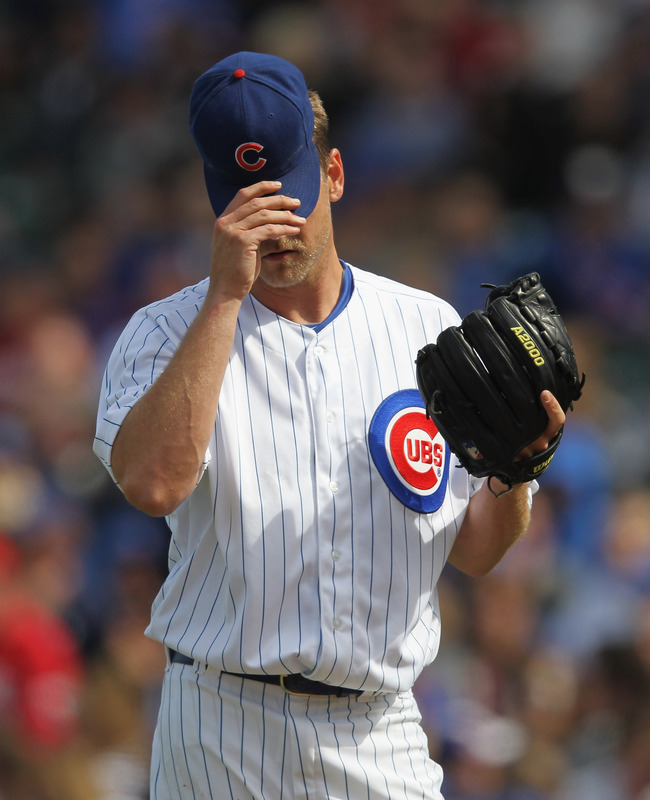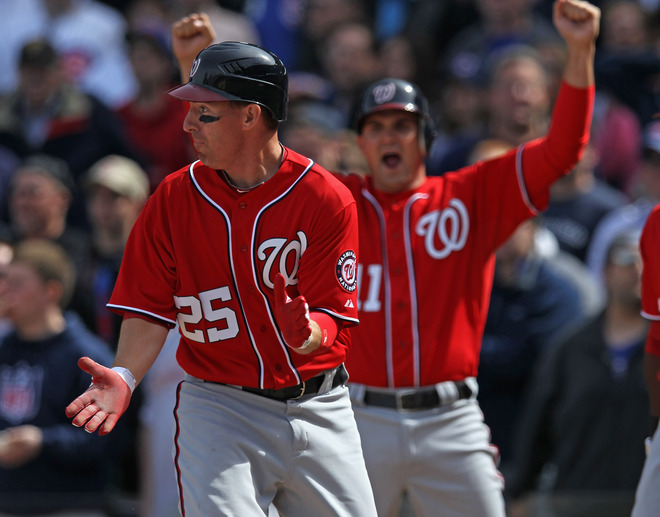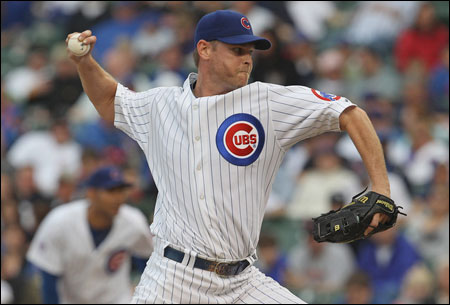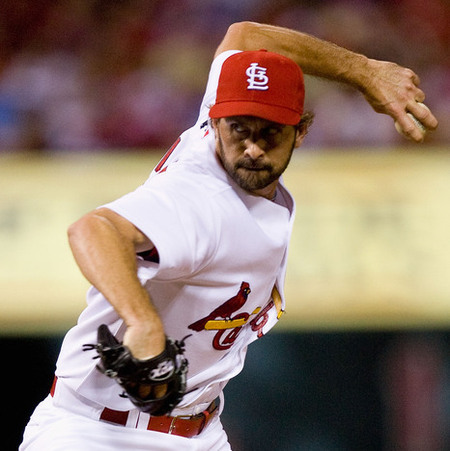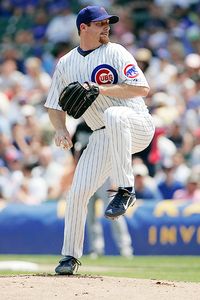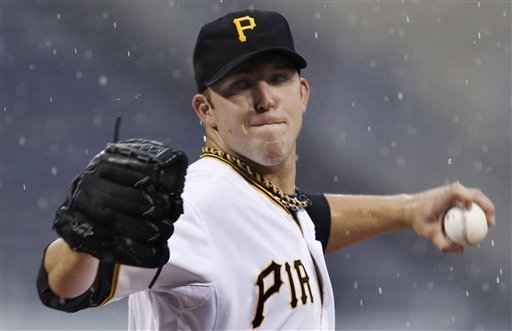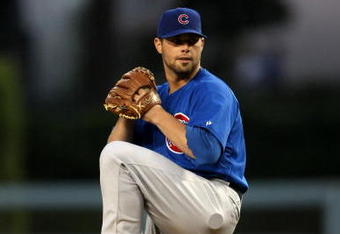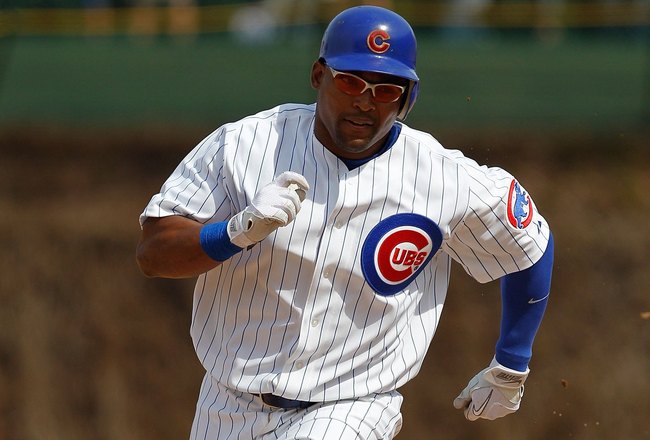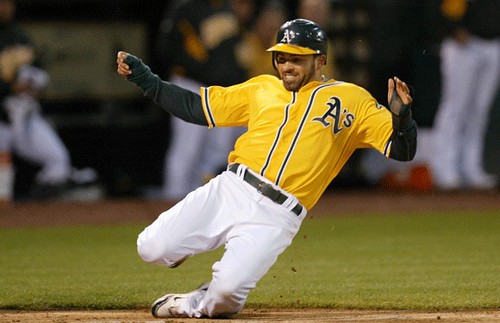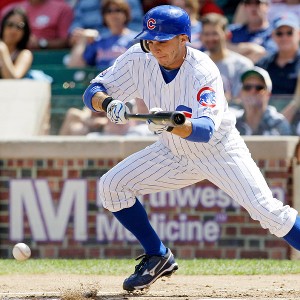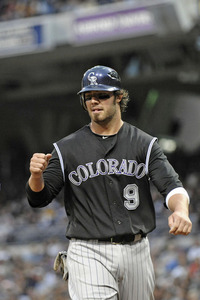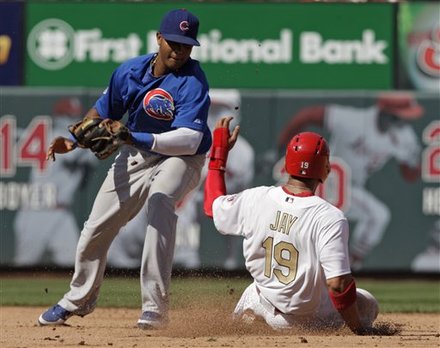 |
| Gold-numbered jerseys? Check. Gold-logo emblazoned hats? Check. Mandatory around-the-neck gold bling? None (yet). |
It wasn't surprising that many assumed that the 2012 Cubs would struggle on the field. It probably was surprising, however, that they got off to such an early start at that. The first homestand, which saw the Cubs host the Nationals for three games and the Brewers for four, started 1-5 for the Cubs as they struggled to find a winning formula.
The Monday night game was not without its highlights, such as Bryan LaHair's monster home run onto Sheffield Avenue early on, but Chris Volstad's shaky start and Shawn Camp's atrocious relief appearance (three earned runs in one inning) spelled doom in a 7-5 loss. It was a competitive ballgame, however, as Starlin Castro batted in the bottom of the ninth with the tying and winning runs on base. A John Axford slider then ended all hopes of a comeback.
Tuesday night was a different story. Paul Maholm, who has now been torched in both of his starts, had allowed six runs by the third inning. Even the platoon catcher, Jonathan Lucroy, hit a home run. This game left little chance for the Cubs.
Yovani Gallardo and Ryan Dempster had a surprisingly intense pitcher's duel in the Wednesday game. Gallardo allowed only a first-inning sacrifice fly to Castro, while Dempster held the 1-0 lead until a two-run homer by the other platoon catcher, George Kottaras, gave the Brewers the lead for good in the seventh.
And just like that, the Cubs had lost the first three games of a four-game series and started the season 1-5. Pretty depressing stuff. But this, my friends, is the wonder of rebuilding. The team will be bad, but there are sure to be signs of life. One such sign came Thursday as the Cubs shut out the Brewers 8-0, a real team effort as six different Cubs knocked in runs. Matt Garza was even one pitch away from a shutout. In fact, he got his pitch - an easily-fielded comebacker to the mound - and he promptly fired it into the stands instead of making the easy, 45-foot throw to first base. Manager Dale Sveum yanked him unnecessarily, and Garza was robbed of the Cubs' first complete game of the season.
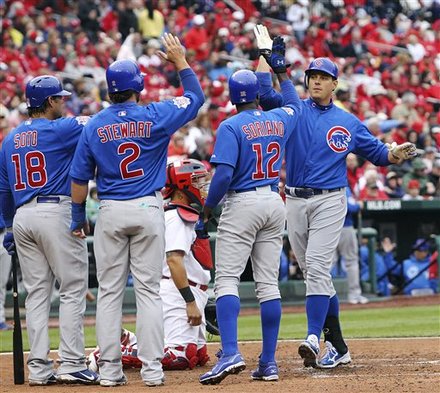 |
| Bryan LaHair gets a round of high-fives after hitting the first Cubs grand slam since October 2010. |
Who gave up all these runs? Why, it was Adam Wainwright. That's the same Wainwright who, after nearly being the team's ace the last half-decade, missed the entire 2011 season due to injury. This means he did nothing to contribute to their World Series run even though he is on the team. So how ironic it was that he was the man to start the game in which they got their World Series rings, wore the glittery gear, and flaunted around pregame in celebratory fashion in front of the second-largest Busch Stadium II crowd ever. But I digress.
Anyway, the point is that the Cubs did show the ability to score runs. I like LaHair's power potential; he has two homers so far, one of which went opposite field and the other which left the stadium entirely. I don't think strength will be an issue with this guy.
The Saturday and Sunday games were a mess. Volstad imploded in the fourth inning of an otherwise sharp-looking start on Saturday, but the Cubs could never come back from the four allowed in the fourth. The Cardinals did salvage one win in those odd-looking gold-numbered jerseys. They had the wit to wear those things for a second game. Who do they think they are, the New Orleans Saints? While we're on the topic, is new manager Mike Matheny paying his pitchers to throw at opposing batters (in "kill the head" fashion)? Probably not, but a concussion did end Matheny's playing career.... Also, in other weird-coincidence news, the Giants wore a similar gold-lettered jersey at their home opener last season as well to celebrate their 2010 World Series championship. Which team did they host in their home opener? The Cardinals.
Back to the Sunday game. That second torching at the hands of Maholm took place on Sunday as Matt Carpenter, some kid who has made a lot of headlines so far, ended up five RBIs for the Cardinals. The Cubs never really got to Cards starter Jake Westbrook, and the series ended with Friday being the lone Cubs win. The series started off promisingly, but the end looked like the Cubs team we were expecting to see.
Through these first three series, the Cubs never really showed what their strengths are. The last guy to make the rotation, Jeff Samardzija, is the only one with more than one win. The offense scored 18 runs in the first six games then put up 17 runs in the next two. Kerry Wood's bullpen failures from the first weekend were forgotten in place of a hodgepodge of dismal 'pen work from Camp, Lendy Castillo, and Carlos Marmol namely. Not to mention Maholm's efforts, which have taken the Cubs out of games practically before they've started. So far, not so good. 3-7 isn't the end of the world, however, and Sveum has the team playing hard. The errors are down and the stolen bases are up. The team certainly has a good swagger, too.
The Cubbies are down in Miami to check out the Marlins' new digs tomorrow night. Ozzie Guillen will return from his five-game suspension to manage the game. Just in case the game turns into a Marlins blowout, go online and count as many articles as you can find that mention both Guillen and Fidel Castro written within the last seven days. Hopefully, though, we can just watch some winning baseball.

